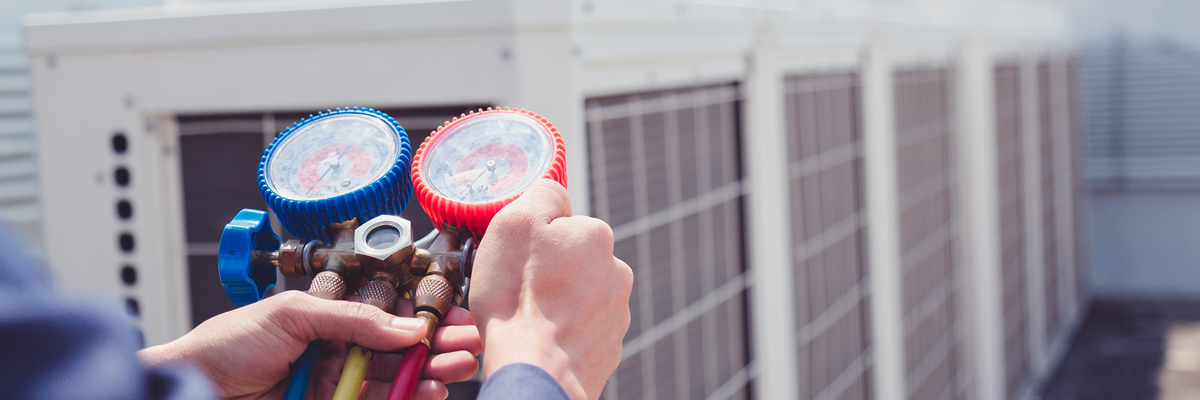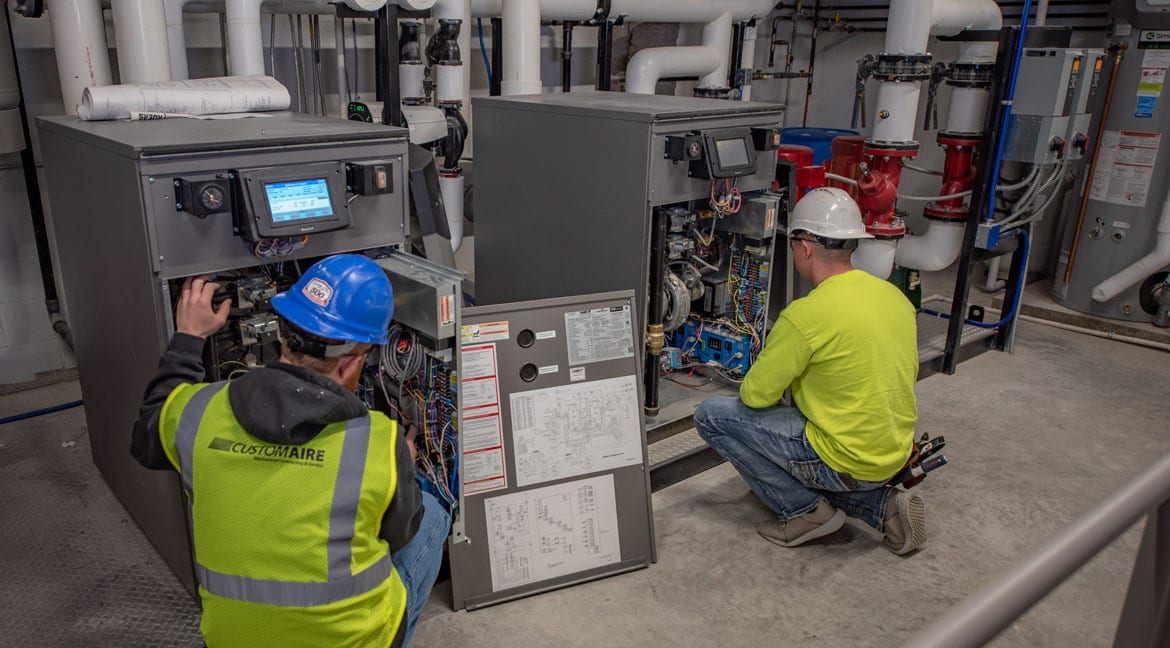Why ductless mini splits Compare to Traditional HVAC Setups
Why ductless mini splits Compare to Traditional HVAC Setups
Blog Article
Discovering the Solutions Supplied for Installing a Heatpump and Furnace in Your A/c Setup
When taking into consideration a new home heating option, homeowners commonly face the choice between warmth pumps and furnaces - ductless mini splits. Each system has unique benefits and disadvantages. Specialist installation plays an essential function in making sure optimal efficiency and longevity of the devices. Recognizing the nuances of the setup procedure can influence the effectiveness of your cooling and heating configuration. What specific solutions can enhance the installation experience and warranty effectiveness? The answers might stun you
Recognizing Warmth Pumps and Furnaces: Key Differences
Warmth pumps and furnaces serve the crucial function of controling indoor temperature levels, yet they run on fundamentally different principles. Heating systems create warmth by burning fuel, such as natural gas or oil, or by utilizing electrical energy to cozy air. This warmed air is after that dispersed throughout the home via ductwork. In contrast, heatpump transfer warm from one place to another, frequently extracting heat from the outdoors air or ground, even in cooler temperatures. This makes them an energy-efficient alternative for both heating and cooling.While furnaces are generally extra efficient in very chilly climates, heatpump can offer year-round temperature control, adapting to seasonal changes. The installation requirements also vary, as heaters demand air flow systems for exhaust gases, whereas heatpump need area for outdoor devices. Comprehending these differences is essential for home owners reviewing their home heating and cooling alternatives.
Benefits of Mounting a Heat Pump
Picking to mount a warmth pump offers a number of benefits that can boost home comfort and power effectiveness. Heatpump give both home heating and cooling down remedies, making them flexible for year-round environment control. Their ability to transfer heat as opposed to create it causes reduced energy consumption, which can lead to considerable savings on utility bills.Additionally, warm pumps operate quietly compared to standard heating unit, adding to an extra relaxed home atmosphere. They also require less upkeep, as they have less moving parts and do not rely upon combustion processes.Moreover, heatpump are eco-friendly, as they make use of renewable resource resources, decreasing greenhouse gas exhausts. Their installment might qualify house owners for power effectiveness discounts or tax incentives, even more boosting the monetary advantages. Generally, warmth pumps represent an efficient, eco-conscious option for contemporary a/c systems, guaranteeing convenience and sustainability.
Benefits of a High-Efficiency Furnace
A high-efficiency heating system offers considerable power financial savings, which can result in reduced energy costs for home owners. Furthermore, these systems add to a lower environmental influence by using less gas and releasing fewer emissions. Boosted comfort levels are also a key advantage, as these heating systems preserve more consistent temperature levels throughout the home.
Energy Cost Savings Potential
While numerous property owners look for ways to lower power costs, buying a high-efficiency heater can greatly boost energy financial savings. These heaters utilize sophisticated technology to convert a greater portion of fuel into useful warmth, substantially enhancing energy efficiency. With an Annual Gas Utilization Performance (AFUE) rating commonly going beyond 90%, high-efficiency versions can save home owners significant amounts on their home heating expenses compared to typical systems. Additionally, they operate more silently and need much less frequent repair work, which can additionally add to overall savings. Gradually, the initial financial investment in a high-efficiency heater typically repays via decreased power expenditures, making it a monetarily smart choice for those looking to optimize their cooling and heating systems.
Ecological Effect Decrease
Spending in a high-efficiency heating system not just benefits property owners monetarily but likewise greatly decreases ecological effect. These heaters operate with increased power effectiveness, which converts to lower greenhouse gas exhausts. By eating less energy, they lower reliance on nonrenewable fuel sources, adding to a decrease in air pollution and aiding battle environment change. Furthermore, high-efficiency models typically make use of sophisticated modern technology that lessens waste, more boosting their ecological benefits. The shift to such systems aligns with worldwide efforts to promote sustainability, encouraging an action in the direction of renewable resource resources. Home owners play a crucial role in cultivating a much healthier planet while enjoying the benefits of lowered energy costs and boosted functional efficiency. Such options reflect a dedication to ecological stewardship and accountable source administration.
Boosted Comfort Degrees
High-efficiency heating systems considerably boost convenience degrees in domestic areas by keeping extra constant temperature levels throughout the home. Unlike traditional versions, these innovative systems make use of variable-speed blowers and modulating gas shutoffs, enabling exact temperature changes. This innovation lessens temperature changes, making sure that each area remains uniformly comfortable. Additionally, high-efficiency furnaces operate silently, adding to a tranquil indoor atmosphere. They likewise boost indoor air high quality by utilizing advanced purification systems that record dirt and allergens, supplying cleaner air for residents. Their energy-efficient operation minimizes utility bills, making them an economical choice in the lengthy run. Overall, high-efficiency heating systems not just promote a cozy atmosphere yet likewise enhance the general living experience within the home.
Professional Installation Services: What to Expect
What can homeowners expect during the professional installment of a heatpump and furnace? A comprehensive assessment of the home's home heating needs will certainly be performed by qualified technicians. This evaluation ensures the ideal sizing of the equipment, adding to energy performance and optimal performance.Once the assessment is complete, the specialists will arrange an installment day, preparing the site for the brand-new system. Homeowners can prepare for a careful installation process that consists of setting up the warm pump and heater, attaching needed ductwork, and assuring proper electrical connections.Technicians will likewise examine the refrigerant levels and examine the system for leaks, making certain whatever runs flawlessly. Home owners must expect clear communication throughout the process, with technicians explaining each action and resolving any inquiries. After setup, a demonstration of the brand-new system's operation will be supplied, making certain home owners recognize exactly how to utilize their new home heating solution effectively.
Regular Maintenance for Optimal Efficiency
After the expert installment of a heat pump and furnace, regular maintenance becomes essential for ensuring peak efficiency. This maintenance generally consists of routine evaluations and maintenance to determine potential next concerns before they escalate. Professionals commonly check the filters, guaranteeing they are clean and changed as required, as dirty filters can moved here impede airflow and efficiency.Additionally, examining refrigerant degrees and guaranteeing electric connections are safe is important for functional safety and performance. Routine upkeep may additionally involve cleansing the outdoor device of the heatpump to stop debris buildup, which can affect performance.Moreover, scheduling yearly tune-ups aids to expand the life-span of the tools and keep power effectiveness. Home owners are urged to keep records of upkeep tasks, as this documentation can help in recognizing patterns and making certain timely actions. Routine maintenance not only improves convenience yet also enhances power intake, resulting in cost financial savings with time.
Troubleshooting Typical Cooling And Heating Issues
Many property owners come across usual HVAC issues that can interrupt convenience and performance. One widespread issue is insufficient home heating or cooling, commonly created by filthy filters, obstructed ducts, or malfunctioning thermostats. An easy check of the air filter can fix air flow troubles, while obstructed vents should be gotten rid of for peak performance.Another constant worry is uncommon sounds, which might indicate loose components or mechanical wear. Home owners must pay attention for squeaks or rattles and check out immediately to avoid more damages. click for info Additionally, frequent biking can signal that the system is extra-large or that a thermostat calibration is needed.Finally, refrigerant leaks in heat pumps can cause lowered performance and should be attended to by a professional. Troubleshooting these usual problems can help in preserving a comfortable interior atmosphere while extending the life of the HVAC system. Seeking specialist aid when essential assurances that these troubles are dealt with effectively and safely.
Expense Considerations for Heatpump and Heater Installation

Frequently Asked Concerns
How Long Does It Require To Mount a Warm Pump or Heating System?
The setup duration for a warm pump or furnace typically varies between 4 to 8 hours, depending upon the intricacy of the system, existing infrastructure, and the experience of the installment group involved in the procedure.
Are There Financing Options Available for HVAC Installations?
Funding alternatives for a/c setups differ by provider, typically including flexible layaway plan, fundings, or credit history choices. Homeowners can check out these choices to take care of expenses efficiently, guaranteeing convenience upgrades align with their monetary restrictions.
What Permits Are Required for Warmth Pump and Heating System Installation?
The essential permits for heatpump and furnace setup commonly consist of building, electric, and mechanical licenses. Local laws may dictate specific demands, so seeking advice from the local authority assurances conformity and facilitates a smoother installment process.
Can I Set Up a Warmth Pump or Heater Myself?
The concern of self-installation for a warmth pump or heating system emerges often. Usually, it is a good idea to seek advice from experts to assure safety, compliance with regulations, and suitable efficiency, as improper setup can bring about significant concerns.

What Warranties Are Commonly Supplied on Installments?
Service warranties on setups typically vary by professional and tools. Typically, they may include minimal lifetime warranties on components, one to five-year labor guarantees, and particular protection for the system's efficiency and performance, reflecting sector standards. In comparison, heat pumps transfer warmth from one area to an additional, frequently extracting warmth from the outside air or ground, also in cooler temperature levels. Their capacity to move heat instead than produce it results in reduced power consumption, which can lead to significant financial savings on energy bills.Additionally, heat pumps run quietly compared to conventional heating systems, contributing to a much more relaxed home environment. What can property owners anticipate throughout the professional installation of a warm pump and heater? Property owners can expect a precise setup procedure that includes establishing up the warm pump and furnace, connecting necessary ductwork, and guaranteeing proper electric connections.Technicians will additionally inspect the refrigerant degrees and check the system for leaks, making sure every little thing runs seamlessly. When considering HVAC upgrades, particularly the installation of a warmth pump or heater, recognizing the associated costs is essential for house owners.
Report this page